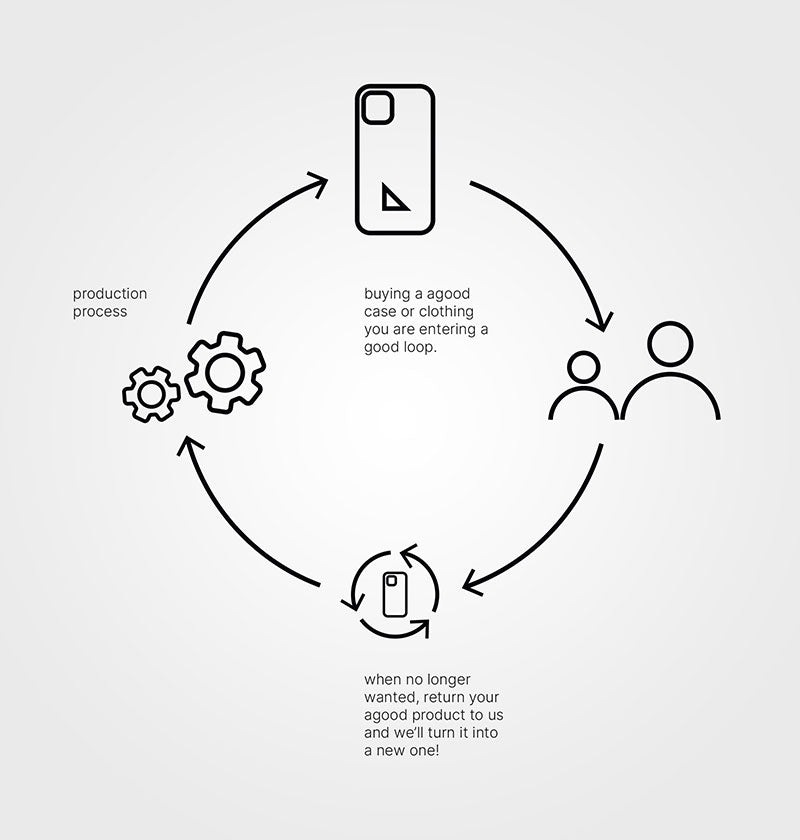Fast fashion may be trendy and affordable, but it comes with a hidden cost that often goes overlooked. From sweatshops and exploitative labour practices to toxic chemicals and pollution, the impact of fast fashion on our planet and its people is staggering. In this blog post, we'll take a closer look at the environmental and social consequences of the fast fashion industry, and explore ways we can all make a positive change towards a more sustainable and ethical fashion future. So let's dive in and discover the true cost of fast fashion.
Contents
-
The history & rise of fast fashion
-
The impact of fast fashion on the environment
-
The social impact of fast fashion
-
The role of consumers in promoting sustainable fashion practices
-
The importance of transparency in the fashion industry
-
The role of governments & policy in regulating the fashion industry
-
The future of the fashion industry & the potential for change
The history and rise of fast fashion
The term "fast fashion" refers to the trend of producing cheap and trendy clothing at a rapid pace. While the concept of fashion has existed for centuries, fast fashion as we know it today can be traced back to the 1990s when fashion retailers began to embrace the idea of quick turnover and low-cost manufacturing. Fast fashion companies prioritize speed and affordability over quality and sustainability, resulting in a system that churns out new clothing lines every few weeks.
This business model has proven to be incredibly lucrative, with fast fashion brands dominating the global market. However, its environmental and social consequences have become increasingly apparent in recent years, prompting many consumers to reconsider their shopping habits and demand more sustainable and ethical options.


The impact of fast fashion on the environment
Fast fashion has a significant environmental impact. The industry is responsible for massive amounts of pollution, from the chemicals used in textile production to the carbon emissions associated with transportation and distribution. The production of synthetic fabrics such as polyester and nylon, which are commonly used in fast fashion, generates greenhouse gases and requires large amounts of energy and water.

Fast fashion also contributes to waste, with millions of tons of clothing ending up in landfills each year. This waste not only takes up valuable space but also releases harmful chemicals as it decomposes. Fast fashion also has a significant impact on wildlife and ecosystems, as chemicals from textile production can leach into waterways and disrupt ecosystems. Climate change is another major issue associated with fast fashion, with the industry accounting for a significant portion of global greenhouse gas emissions.
The social impact of fast fashion
The social impact of fast fashion cannot be ignored either. The industry is known for exploiting cheap labour, particularly in developing countries where labour laws are lax or not enforced. Workers in these countries are often paid extremely low wages and forced to work in unsafe and unhealthy conditions. Fast fashion brands have been associated with various cases of labour abuse, ranging from child labour and forced labour to human trafficking.

The focus on low prices and fast production has created a race to the bottom in terms of workers' rights, with little regard for the well-being of those who make our clothes. Fast fashion is not only a labour issue, but also intersects with other social justice issues such as gender inequality and poverty. Women, in particular, are disproportionately impacted by the fast fashion industry, as they make up the majority of the low-wage garment workforce.
The role of consumers in promoting sustainable fashion practices
As consumers, we have the power to change and shape the future of the fashion industry. By making conscious, informed choices about the clothes we buy and the brands we support, we can help shift this industry towards more sustainable and ethical practices. One option is to invest in quality, long-lasting pieces that are designed to be worn for years rather than just one season. This reduces waste and also promotes a more minimalist, thoughtful approach to fashion.


Another option is to support sustainable clothing brands that prioritize ethical labour practices. Sustainable fashion brands often use eco-friendly materials like organic cotton, recycled cotton or recycled polyester, while also prioritizing fair labour practices. Thrifting and clothing swaps are also great options for reducing your fashion footprint, as they give clothes a second life and prevent them from ending up in landfills.
Our t-shirts, made from organic and recycled cotton, are super soft and durable, and have a circular design that ensures they won't end up in a landfill. Plus, we're proud to say that our packaging is environmentally friendly too - all our t-shirts come in cornstarch bags and stone paper boxes.


The best part? When it's time to say goodbye to your beloved t-shirt, you can easily recycle it and get a discount on a new one, so you can keep looking great while doing your part for the planet.
For every t-shirt sold, we donate a food kit to a child in need through Save the Children. So, not only will you be supporting a great cause, but you'll also be making a positive impact on the environment. Join us in our mission to create a better world with our recycled cotton women's t-shirts and sustainable t-shirts for men.
The importance of transparency in the fashion industry
Transparency plays a vital role in the fashion industry, as it empowers consumers to make well-informed choices about the clothes they buy and the companies they support. Unfortunately, the fashion industry has historically been opaque, with many brands obscuring their supply chains and labour practices. This lack of transparency makes it difficult for consumers to know whether the clothes they buy are produced ethically and sustainably. However, in recent years, there has been a growing movement towards transparency in the industry.

Many brands are now taking steps to provide more information about their supply chains, such as the factories they use and the materials they source. As a result, consumers can hold brands responsible and make better-informed decisions. Additionally, transparency can help drive industry-wide change by promoting best practices and highlighting areas for improvement. Circular fashion, which aims to reduce waste and increase the lifespan of garments through recycling and upcycling, is an important step towards a more sustainable fashion industry.
The role of governments and policy in regulating the fashion industry
Governments and policy-makers also have an important role to play in regulating the industry and promoting sustainable and ethical practices. Some countries have already taken steps to regulate the fashion industry, with France being the first to pass a law banning the destruction of unsold goods, which now have to be reused, recycled, or donated by companies. Other countries have implemented regulations around worker rights and environmental protections in the textile and garment industries.

However, many experts argue that governments need to do more to hold fashion brands accountable for their impact on the environment and society, and to incentivize sustainable and ethical practices. This may include taxes or tariffs on environmentally harmful materials, or subsidies for sustainable production methods.
The future of the fashion industry and the potential for change
The fashion industry is definitely at a crossroads, facing growing pressure to address its impact on the environment and society. While fast fashion has dominated the industry for decades, there are signs that this is beginning to shift. Many consumers are becoming more conscious of the impact of their purchases and are demanding more sustainable and ethical fashion options. Brands are also beginning to respond, with many investing in sustainable production methods, ethical labour practices, and transparency.


However, the fashion industry must continue to evolve in order to create a more sustainable and equitable future. This will require collaboration across the industry, from brands to consumers to policy-makers, as well as continued innovation and creativity. Ultimately, the future of the fashion industry is in our hands, and by working together, we can create a more sustainable and just fashion future. By participating in agood loop, you can contribute to a fully circular program that promotes sustainability and reduces waste. So, do not wait - take the first step and do your part today!





























